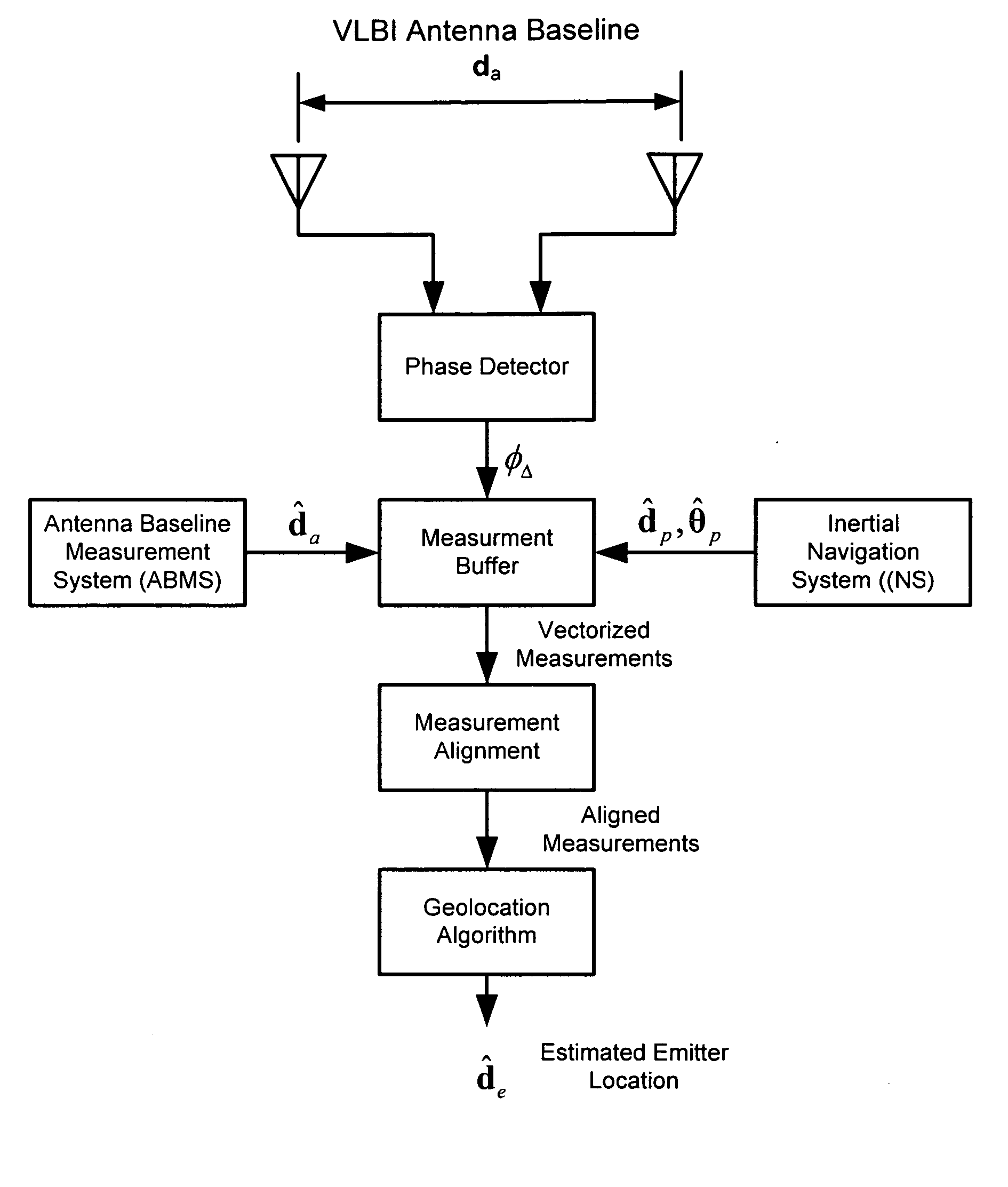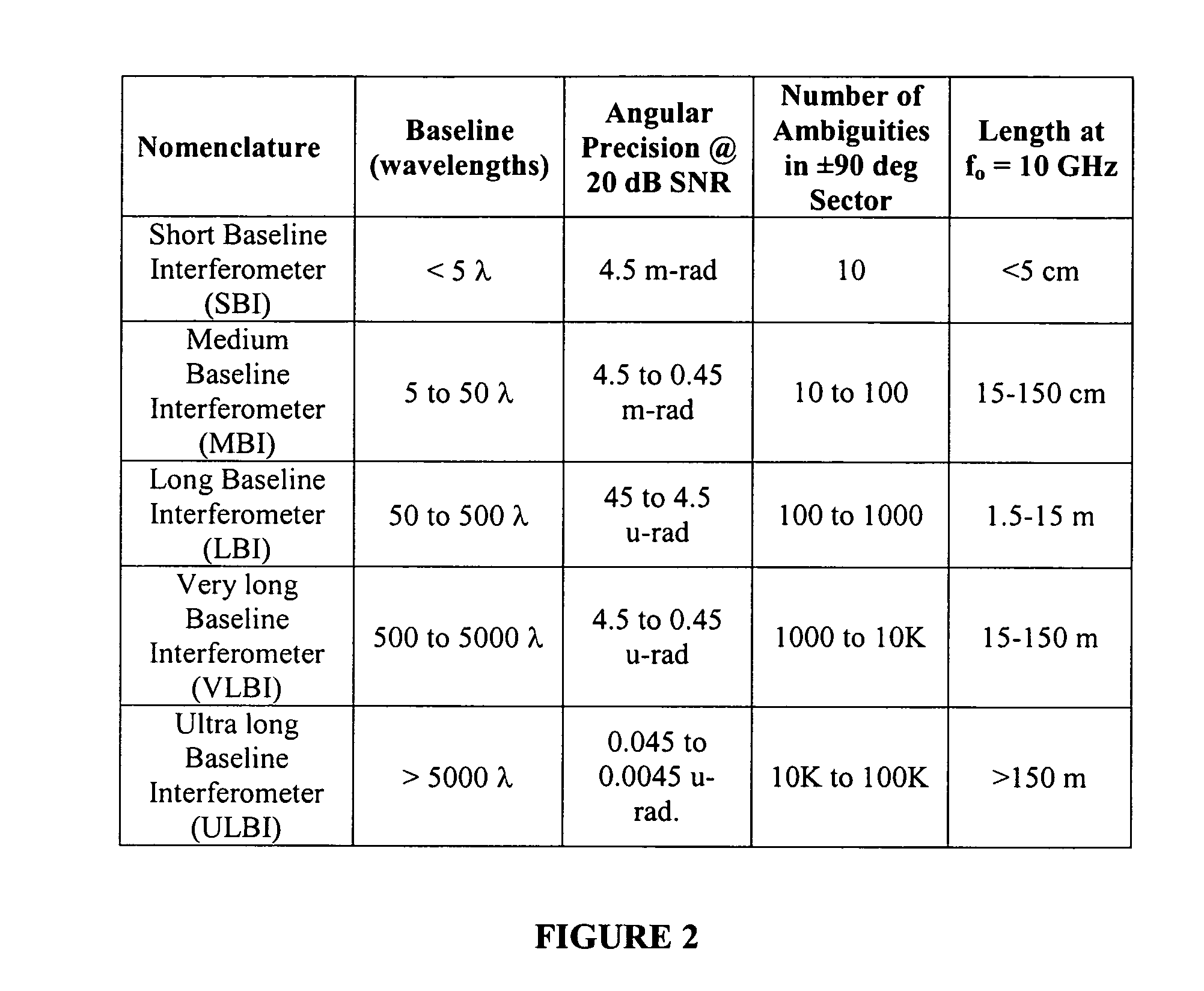Precision geolocation system and method using a long baseline interferometer antenna system
- Summary
- Abstract
- Description
- Claims
- Application Information
AI Technical Summary
Benefits of technology
Problems solved by technology
Method used
Image
Examples
Embodiment Construction
[0033] A single observer geolocation method can be illustrated as an equivalent triangulation process, as shown in the simplified two dimensional view of FIG. 1. A platform moving along a measurement path from point #1 to point #N makes multiple observations of the radio frequency signals transmitted by an emitter whose location is sought. From the observations, the system computes lines of bearing between the measurement location and the emitter. The lines of bearing should intersect at the emitter location. However, due to measurement noise, the lines of bearing almost never truly intersect at a single point. Statistical methods are commonly used to estimate the emitter location, which includes an estimate of the uncertainty of the emitter location indicated by location ellipses or circles. These ellipses or circles are related to the Elliptical Error Probability (EEP) or Circular Error Probability (CEP) which defines elliptical or circular regions with the minimum area or volume ...
PUM
 Login to View More
Login to View More Abstract
Description
Claims
Application Information
 Login to View More
Login to View More - R&D
- Intellectual Property
- Life Sciences
- Materials
- Tech Scout
- Unparalleled Data Quality
- Higher Quality Content
- 60% Fewer Hallucinations
Browse by: Latest US Patents, China's latest patents, Technical Efficacy Thesaurus, Application Domain, Technology Topic, Popular Technical Reports.
© 2025 PatSnap. All rights reserved.Legal|Privacy policy|Modern Slavery Act Transparency Statement|Sitemap|About US| Contact US: help@patsnap.com



